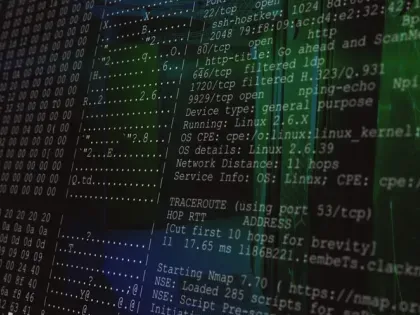Learn how to revolutionize the reporting process at every level of your organization.
3 Keys to Successful Enterprise Risk Management
Tags:

Despite the best efforts from security and risk leaders, it can be extremely difficult to establish an efficient and effective enterprise risk management plan. As with anything that requires buy-in from the executive level, there has to be defined goals and clear paths the security team will take to make investments in cyber risk management feel worth it.
The interest from executives is there: with the recent SolarWinds breach, and continued hacking attempts on organizations involved in the COVD-19 pandemic, cybersecurity has never been asked about more by company management and the board of executives. No organization wants to be vulnerable, but many leadership teams don’t know where to target their efforts.
Narrowing down the pieces of enterprise risk management into three, more manageable sections can help security and risk teams find what’s missing from their programs, and begin directing executive leadership, as well as their budget, towards the area of risk management that needs the most work. In this blog, we break it down by the team, techniques, and tools driving your enterprise risk management program.
First T For Enterprise Risk Management Success - Team
To follow best practices for enterprise risk management, your cybersecurity risk management team should consist of IT and cybersecurity professionals with defined responsibilities. The team should work closely with representatives from across the organization. This should include a Chief Information Security Officer (CISO), the CEO, board members, heads of departments, as well as key stakeholders from your vendors and partners. Keeping each of these stakeholders informed on how their individual role is related to and reliant on cybersecurity will ensure a well-rounded enterprise risk management program.
While the goal is gain support and open communication from each department within your organization, it might take more time and support from company leaders. The best you can do initially is to ensure everyone across all business units is following cybersecurity best practices, to protect their data, as well as the company network, including:
- Setting up two-factor authentication.
- Completing company IT training, especially courses on phishing.
- Using only approved devices when connecting to the company network.
Second T For Enterprise Risk Management Success - Technique
It’s important to define processes so your team can follow repeatable techniques throughout each stage of your enterprise risk management program. Many teams rely on manual, outdated techniques for managing cybersecurity risk that make it difficult to keep risk management under control. With the implementation of automated, data-driven techniques into your enterprise risk management program, it’s easier for your team members to all stay on the same page.
Following and repeating your enterprise risk management processes allows areas of risk to be managed the same way across each vendor, partner, or line of internal business. Consider the techniques your team uses in the following areas:
- Assessing your program: Do you have team members sorting through company files and using their own judgement for if your network is protected in different areas (say, employees’ WFH networks, or through a vendor’s network)? Instead of relying on the individual time and judgement of members of your team, using automated techniques like security ratings software can be more efficient and easily repeated. With security ratings, you can set risk thresholds for the level of risk you’re willing to accept in different parts of your network to give your cybersecurity team a defined way to assess your program.
- Onboarding new vendors: If your cybersecurity team also handles vendor risk management, the technique you follow to onboard your new vendors into your network is critical to preventing malicious activity down the road. Assessing your vendors and placing them in risk-based tiers based on the company data they will have access to can help your team know how much attention to focus on each third-party, instead of treating all vendors the same.
- Remediating vulnerabilities: What about when malicious activity does occur on your network? Instead of scrambling to find who on your team is available to help in the moment, have a pre-established plan for who is responsible for remediation in different areas of your program. Establish communication trees, relationships with IT and engineering, and a contact person within each vendor or partner organization if a threat were to come from their network. With Bitsight for Third-Party Risk Management you can pinpoint where exactly in your vendor network an exposure has occurred, and then can even invite the vendor in the Bitsight database to take a joint approach at remediation.
Third T For Enterprise Risk Management Success - Tools
Last but not least, ensuring your enterprise risk management program is utilizing the right tools to take on risk from an organizational perspective is key to successful implementation. One of the most important areas to implement the proper tools is when communicating with the board of directors or executive team. Utilizing reports that summarize your program to promote decision making and proper allocation of resources will lead to a holistic company approach to cybersecurity. When your company leaders understand and care, it will create an organizational focus on cybersecurity, which is needed for effective enterprise risk management.



